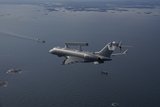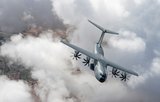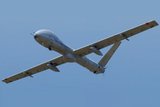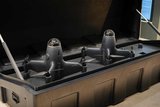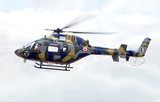US Navy acquires additional anti-submarine warfare kits for P-8A Poseidon aircraft
A full-rate production contract for HAAWC on P-8A aircraft was first awarded in August 2022. (Photo: NAVAIR)
Boeing has been awarded a contract from the US Department of Defense worth US$61.2 million for the procurement of additional High Altitude Anti-Submarine Warfare Weapon Capability (HAAWC) equipment modules for the USN’s P-8A Poseidon maritime patrol aircraft
The USN first awarded Boeing a $25.6 million contract for full-rate production of HAAWC in 2022 and in November 2022, the USN announced Initial Operational Capability for HAAWC.
This $61.2 million contract and procurement of additional kits forms part of a wider multi-year procurement agreement and is set to complete by 2027. Any potential future orders could boost the existing $161 million contract to $349 million, the
Already have an account? Log in
Want to keep reading this article?
More from Air Warfare
-
![Singapore’s Hermes 900 buy to enhance multi-domain ISR capabilities]()
Singapore’s Hermes 900 buy to enhance multi-domain ISR capabilities
Drawing on its endurance and substantial payload capacity, the Hermes 900 would provide a boost to Singapore’s ISR capabilities, particularly in the maritime domain.
-
![Dubai Airshow 2025: GA-ASI’s MQ-9B racks up new milestones with AEW demo planned]()
Dubai Airshow 2025: GA-ASI’s MQ-9B racks up new milestones with AEW demo planned
The company announced its demonstration timeline while confirming the MQ-9B had completed the platform’s third lifetime test.
-
![Dubai Airshow 2025: Edge Group eyes international market expansion, unveils new UAVs]()
Dubai Airshow 2025: Edge Group eyes international market expansion, unveils new UAVs
The UAV portfolio expansion comes in the wake of the Edge-Anduril joint venture announced ahead of the airshow.
-
![India reopens hunt for reconnaissance and surveillance helicopters]()
India reopens hunt for reconnaissance and surveillance helicopters
The extended deadline for vendors highlights the complexity of the procurement for India, with numerous vendors positioning themselves for the programme.
-
![Dubai Airshow 2025: Lockheed’s AGM-158 XR flight tests planned for 2026]()
Dubai Airshow 2025: Lockheed’s AGM-158 XR flight tests planned for 2026
The AGM-158 XR, which started as a Lockheed Martin internal investment, was first unveiled in September 2024.








